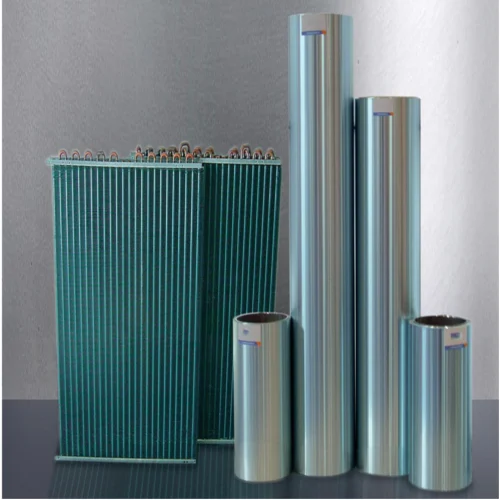What is aluminium foil 11 micron? 11 micron aluminum foil refers to a thin sheet of aluminum that is approximately 11 microns (μm) thick. The term "micron" is a unit of length equal to one millionth of a meter. Aluminum foil 11 micron, also known as 0.0011mm aluminum foil, is a multifunctional material with excellent barrier properties, flexibility and conductivity. Aluminum foil thickness application Aluminu ...
Why does hair use aluminum foil? The use of aluminum foil for hair is often done during hair coloring, especially when a specific pattern or effect is desired. Aluminum foil can help isolate and hold the hair dye in place, ensuring it only goes where it's needed, creating a more precise and detailed finish. When coloring hair, hairdressers usually divide the hair to be colored into sections and wrap each sect ...
What is AC aluminum foil? Air conditioning aluminum foil, often called AC foil or HVAC foil, is a type of aluminum foil used in the heating, ventilation and air conditioning (HVAC) industry. Air-conditioning aluminum foil is usually used to make heat-conducting fins for air-conditioning heat exchange and air-conditioning evaporators. It is one of the important alloys used in air conditioning manufacturing raw ma ...
What is aluminum foil for tablet packaging Moisture-proof, anti-oxidation and light-proof properties: Aluminum foil for tablet packaging has excellent moisture-proof, anti-oxidation and light-proof properties, which can effectively protect medicines from moisture, oxygen and light, thereby prolonging the shelf life and validity period of medicines. Good adhesion: Aluminum foil for tablet packaging has excelle ...
What is extra wide aluminum foil "Extra-wide aluminum foil" refers to aluminum foil that is wider than commonly used standard widths. Aluminum foil is a thin sheet of metal used for a variety of purposes, including packaging food, covering cooking dishes, and as a heat-resistant barrier. Extra wide aluminum foil thickness The standard width of household aluminum foil is usually about 12 inches (30 cm). Extra-w ...
Can aluminum foil be used to wrap chocolate?Aluminum foil can be used to wrap chocolate, thanks to its properties. In fact, aluminum foil packaging of chocolate is a common and practical method of packaging and preserving chocolate. Aluminum foil is suitable for packaging chocolate for the following reasons: Barrier properties: Aluminum foil effectively blocks moisture, air, light and odors. Helps protect c ...
Lunch boxes are essential packaging boxes in the food packaging industry. Common lunch box packaging materials on the market include plastic lunch boxes, aluminum foil lunch boxes, etc. Among them, aluminum foil lunch boxes are more commonly used. For lunch box packaging, aluminum foil is widely used due to its excellent barrier properties, flexibility and lightness. What aluminum foil alloy is most suitable for ...
In the production of double foil, the rolling of aluminum foil is divided into three processes: rough rolling, intermediate rolling, and finishing rolling. From a technological point of view, it can be roughly divided from the thickness of the rolling exit. The general method is that the exit thickness is greater than Or equal to 0.05mm is rough rolling, the exit thickness is between 0.013 and 0.05 is intermediat ...
Aluminum foil is a thin sheet of aluminum metal that has the following properties: Lightweight: Aluminum foil is very lightweight because aluminium metal itself is a lightweight material. This makes aluminum foil an ideal material during packaging and shipping. Good sealing: The surface of aluminum foil is very smooth, which can effectively prevent the penetration of oxygen, water vapor and other gases, s ...
Product name: plain aluminum foil SIZE (MM) ALLOY / TEMPER 0.1MM*1220MM*200M 8011 O
Aluminum foil is often colloquially referred to as "tin foil" due to historical reasons and similarities in appearance between the two materials. However, it's important to note that aluminum foil and tin foil are not the same thing. Here's why aluminum foil is sometimes called "tin foil": Historical Context: The term "tin foil" originated at a time when actual tin was used to create thin sheets for wrappin ...










